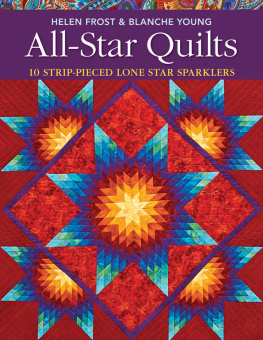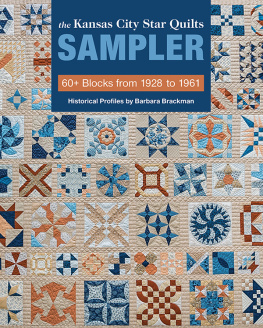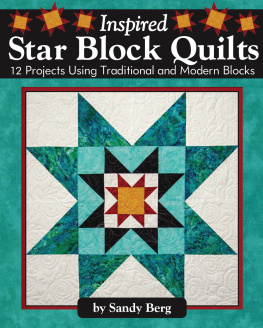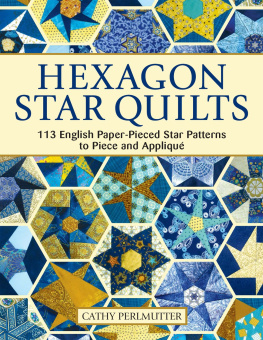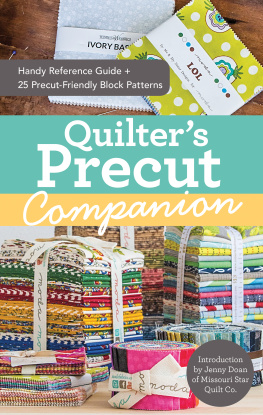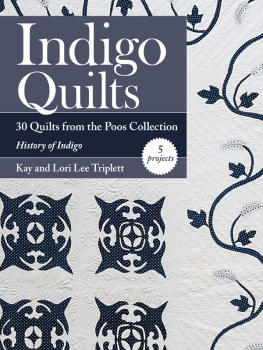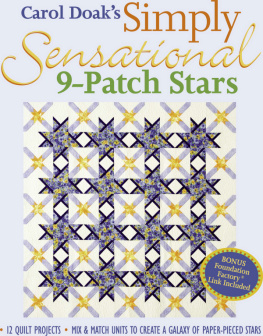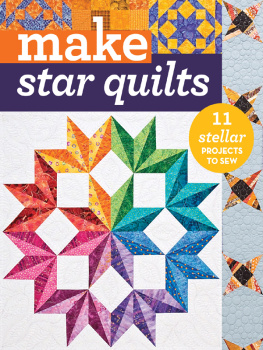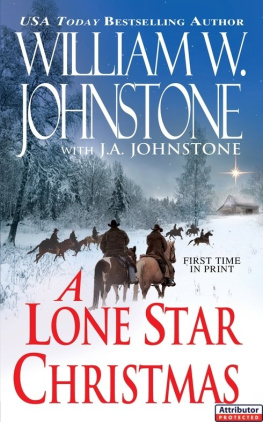
Text copyright 2010 by Helen Frost and Blanche Young
Artwork copyright 2010 by C&T Publishing, Inc.
Publisher: Amy Marson
Creative Director: Gailen Runge
Acquisitions Editor: Susanne Woods
Editor: Liz Aneloski
Technical Editors: Ellen Pahl and Janice Wray
Copyeditor/Proofreader: Wordfirm Inc.
Cover Designer: Kerry Graham
Book Designer: Rose Sheifer-Wright
Production Coordinator: Jenny Leicester
Production Editor: Julia Cianci
Illustrator: Mary Flynn
Photography by Christina Carty-Francis and Diane Pedersen of C&T Publishing, Inc., unless otherwise noted
Published by C&T Publishing, Inc., P.O. Box 1456, Lafayette, CA 94549
All rights reserved. No part of this work covered by the copyright hereon may be used in any form or reproduced by any meansgraphic, electronic, or mechanical, including photocopying, recording, taping, or information storage and retrieval systemswithout written permission from the publisher. The copyrights on individual artworks are retained by the artists as noted in All-Star Quilts. These designs may be used to make items only for personal use or donation to nonprofit groups for sale. Each piece of finished merchandise for sale must carry a conspicuous label with the following information: Designs copyright 2010 by Helen Frost and Blanche Young from the book All-Star Quilts from C&T Publishing, Inc.
Attention Teachers: C&T Publishing, Inc., encourages you to use this book as a text for teaching. Contact us at 800-284-1114 or www.ctpub. com for lesson plans and information about the C&T Creative Troupe.
We take great care to ensure that the information included in our products is accurate and presented in good faith, but no warranty is provided nor are results guaranteed. Having no control over the choices of materials or procedures used, neither the authors nor C&T Publishing, Inc., shall have any liability to any person or entity with respect to any loss or damage caused directly or indirectly by the information contained in this book. For your convenience, we post an up-to-date listing of corrections on our website (www.ctpub.com). If a correction is not already noted, please contact our customer service department at ctinfo@ ctpub.com or at P.O. Box 1456, Lafayette, CA 94549.
Trademark () and registered trademark () names are used throughout this book. Rather than use the symbols with every occurrence of a trademark or registered trademark name, we are using the names only in the editorial fashion and to the benefit of the owner, with no intention of infringement.
Library of Congress Cataloging-in-Publication Data
Frost, Helen Young.
All-star quilts: 10 strip-pieced lone star sparklers / Helen Frost and Blanche Young.
p. cm.
ISBN 978-1-57120-958-0
1. PatchworkPatterns. 2. Strip quilting. 3. Stars in art. I. Young, Blanche. II. Title.
TT835.F764 2010
746.46dc22 2010007249
Printed in China
10 9 8 7 6 5 4 3 2 1
Acknowledgments
We thank our wonderful team at
C&T, particularly our talented editors,
Liz Aneloski, Ellen Pahl, and Julia Cianci.
We are so grateful to our quilters, especially
Myrna Ficken, Kris Neifeld, and Julie Stauffer,
for the beautiful work they did for us.
We thank Lynette Young Bingham
for transporting the quilts, and
Rachel Frost for photographing them.
We also thank the many hundreds of quilters
who, over the years, made stars from our books
and classes, creating a legacy of Lone Star quilts.
CONTENTS
INTRODUCTION
Lone Star, Star of Bethlehem, Blazing Starby any name, this glorious quilt pattern has captivated quilters for generations. The basis for this design is the eight-pointed LeMoyne Star, one of a handful of quilt patterns that seem to be as old as piecing itself. Barbara Brackman, in researching old patterns, discovered that the eight-pointed star appears to have been the most popular design in early quilts, with the Star of Bethlehem perhaps the first fad quilt.
We have been exploring this design for more than 35 years, never tiring of it because each quilt turns out so differently. We have played with various configurations of star points, making other designs and discovering some new ones. Weve also tested new sizes of diamonds and found that tiny diamonds are easier to make than big ones!
In the 30 years since our first Lone Star book debuted (complete with cardboard templates), the tools and materials have improved and so have the quilts. We realized that it was once again time to put pen to paperor fingertips to keyboardto present new quilts and variations for quilters to make. We hope the gallery quilts will serve as a retrospective of sortsnot of all our stars, but of our more recent outputas well as inspiration for your own starry wonders. We hope that you, too, will be captivated by these dazzling designs.
FABRICS TO PAINT A STARRY SKY
If you only pay attention to it you will see that certain stars are lemon-yellow, others pink or a green, blue and forget-me-not brilliance it is obvious that putting little white dots on the blue-black is not enough to paint a starry sky.
Vincent Van Gogh, 1888
Quilters have been entranced by stars for as long as they have been putting needle to fabric. This geometric design, filled with movement, showcases a quilters skill as well as her fabric collection. Tiny diamonds of blazing color, any color, can create radiance unlike any other patchwork patterns.
Star Fabrics
To choose fabrics for a reproduction-style star, look at the myriad examples made by quilters of past generations. Those quilters usually contrasted the colors to form strong rings of color. They also introduced light fabrics, sometimes the same color as the background, to break the star points.
To make a more contemporary-looking star, however, try choosing fabrics that gradually blend from lighter to darker or from color to color. This blending of colors creates the illusion of depth and layers.
Here are some guidelines for fabric selection, whether you want a traditional look or something more contemporary.
Always look at the fabrics from a distance of a few feet. What may be an enchanting print up close could be a mishmash from a little farther away. Place the various fabrics next to each other to see the effect they have on each other and how they look together from a distance.
Starting with lighter colors at the center of the star and gradating to y darker colors at the widest part of the point is more pleasing than the opposite. Using dark fabrics for the center of the star creates the optical illusion of the center sinking inward.
If you use a contrasting color, place it in an important spotat the tip of the star, or the center, or at the hub, the widest part of the point. Placing a strong color anywhere else breaks up the point visually, center and tip

Contrasting color at center and tip

Contrasting color at hub
Avoid alternating the same two colors. Because of the diamond configuration, alternating colors results in the dreaded Argyle sock syndrome.

